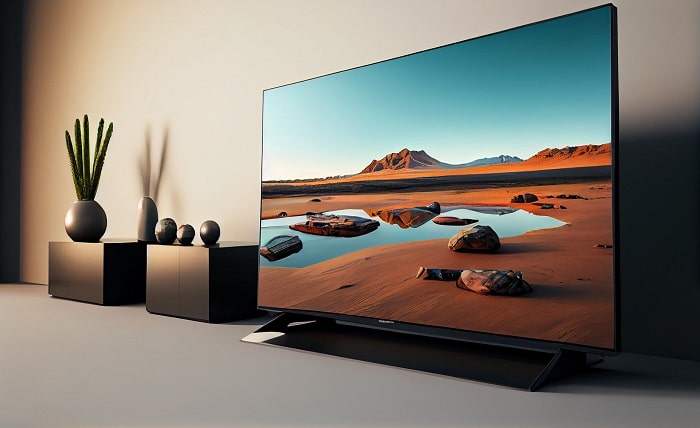TV: Television Technology, Trends, and Impact

The history of TV begins with the invention of mechanical television in the 1920s, pioneered by John Logie Baird. Early TVs were rudimentary, displaying black-and-white images with limited clarity. The advent of electronic television in the 1930s revolutionized the industry, allowing for better picture quality and greater mass appeal. Post-World War II, TV became a household staple, evolving from a luxury item to a cultural necessity. By the 1950s, color TV transformed how audiences engaged with content, paving the way for modern innovations like smart TVs.
How TV Technology Has Evolved Over Time
TV technology has seen remarkable progress, transitioning from CRT displays to modern LED and OLED screens. The 1970s introduced the first flat-screen TVs, but it wasn’t until the 2000s that high-definition (HD) TVs became widely accessible. More recently, 4K and 8K TVs have set new standards for picture quality. Smart TVs have integrated streaming services like Netflix and YouTube, merging traditional television with internet functionality. Innovations like HDR and advanced sound systems have further enhanced the TV viewing experience.
The Cultural Impact of TV on Society
TV has played a crucial role in shaping modern culture. Since its inception, TV has been a medium for entertainment, education, and information dissemination. Iconic TV shows like Friends and Breaking Bad have become cultural phenomena, influencing fashion, slang, and even societal norms. News broadcasts have kept viewers informed about global events in real-time, while educational TV has enriched millions. Despite competition from online platforms, TV remains a central medium that shapes public opinion and cultural trends.
The Rise of Smart TVs and Streaming Platforms
Smart TVs have transformed how audiences consume content, combining traditional TV with internet connectivity. With built-in apps like Netflix, Hulu, and Amazon Prime Video, smart TVs have made it easier than ever to access a vast array of content. The integration of voice assistants like Alexa and Google Assistant allows users to control their TV with voice commands. As streaming services gain dominance, the shift from cable TV to on-demand content continues to redefine the role of TV in the home.
TV and the Evolution of Entertainment Content
The type of content shown on TV has evolved significantly over the decades. Early TV focused on live programming, such as news and sports, due to technological constraints. The introduction of scripted dramas, sitcoms, and reality shows diversified TV programming. Today, premium networks and streaming services create high-budget, critically acclaimed series that rival Hollywood films. TV has also embraced niche genres, catering to specific audience segments, showcasing its adaptability and enduring relevance.
TV Advertising: A Powerful Tool for Brands
TV advertising remains one of the most effective ways for brands to reach a large audience. Despite the rise of digital marketing, TV ads generate immense impact due to their visual and emotional appeal. Super Bowl commercials, for example, are highly anticipated and demonstrate TV’s influence as an advertising medium. With the advent of smart TVs, targeted advertising is becoming more prevalent, allowing brands to deliver personalized messages based on viewer preferences.
The Role of TV in Shaping Political Opinions
TV has been a critical platform for political discourse, shaping public opinion and election outcomes. Televised debates, campaign ads, and news coverage play a pivotal role in informing voters. The first-ever televised presidential debate in 1960 between Kennedy and Nixon showcased the power of TV in influencing public perception. Modern political campaigns leverage TV to reach diverse demographics, ensuring the medium remains a cornerstone of political communication.
TV and Its Impact on Family Dynamics
TV has long been a focal point in family life, bringing members together for shared viewing experiences. Family-friendly shows and live sports events create bonding moments. However, the advent of personal devices and streaming platforms has shifted viewing habits. Today, families often watch content on individual screens, leading to less shared TV time. Despite this, TV continues to play a vital role in fostering connections, particularly during major events like the Olympics or festive holidays.
The Future of TV: Innovations on the Horizon
The future of TV is poised to bring even more innovation. Technologies like 8K resolution, artificial intelligence, and virtual reality are set to redefine the TV experience. Flexible and rollable TV screens are already entering the market, offering greater versatility in home design. Additionally, advancements in augmented reality (AR) and immersive sound promise to enhance how viewers engage with content. The integration of blockchain technology for secure transactions and personalized content curation may also revolutionize TV consumption.
Why TV Remains Relevant in a Digital Age
Despite the rise of smartphones, tablets, and laptops, TV continues to hold its ground as a primary entertainment medium. The large screen and superior sound quality make TV the preferred choice for immersive viewing. Smart TVs have bridged the gap between traditional TV and digital content, ensuring their relevance in a streaming-dominated world. Additionally, live events like sports and award shows are best enjoyed on TV, highlighting its unmatched ability to create collective viewing experiences.
Conclusion
From its humble beginnings to its current status as a technological marvel, TV has continuously evolved to meet the needs of its audience. It has shaped culture, politics, and entertainment, serving as a unifying medium for families and societies. As technology advances, TV will likely adapt further, integrating new features while retaining its core purpose—bringing people together through shared experiences. The journey of TV is a testament to its resilience and relevance in an ever-changing digital landscape.
FAQs:
1. What is the difference between HD and 4K TV?
HD TVs have a resolution of 1920×1080 pixels, while 4K TVs offer four times the resolution at 3840×2160 pixels, resulting in sharper images.
2. How do smart TVs differ from regular TVs?
Smart TVs have internet connectivity and built-in apps, allowing users to stream content directly, unlike regular TVs that require external devices.
3. What is the future of TV technology?
Future innovations include 8K resolution, AI integration, flexible screens, and advancements in AR and VR for immersive experiences.
4. How has TV impacted society?
TV has influenced culture, education, politics, and entertainment, serving as a powerful medium for information and shared experiences.
5. Why is TV still popular despite the rise of digital platforms?
TV offers superior screen size, sound quality, and the ability to enjoy live events, making it a preferred medium for many viewers.




